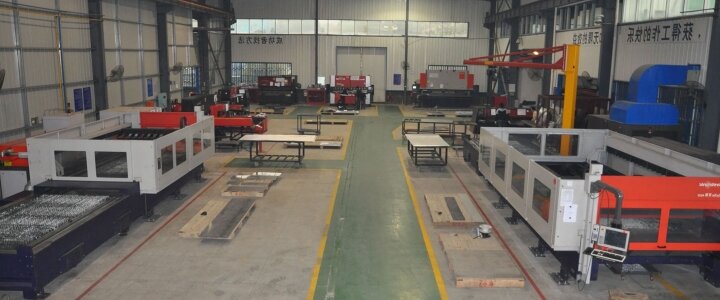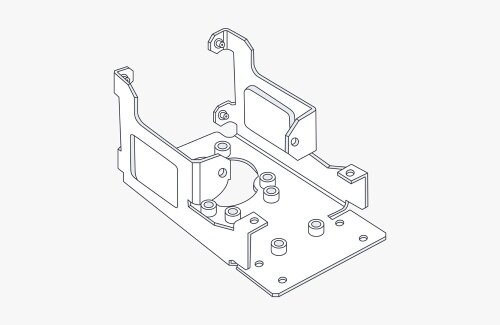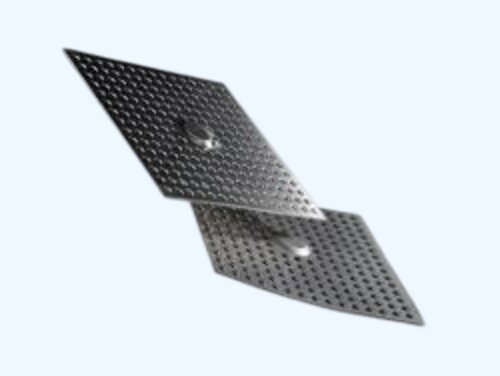Nella fabbricazione di lamiere personalizzate, la precisione e la coerenza fanno la differenza tra un buon lavoro e un ottimo lavoro. Ogni progetto ha bisogno di tolleranze strette, finiture uniformi e consegne affidabili. Ma per raggiungere questo livello di qualità non bastano solo operai specializzati o macchine avanzate. È necessario un sistema che tenga tutto sotto controllo dall'inizio alla fine.
È qui che la norma ISO 9001:2015 svolge un ruolo fondamentale. Fornisce ai produttori una struttura chiara per gestire i processi, prevenire gli errori e soddisfare le esigenze dei clienti. In questo articolo esamineremo i motivi per cui la norma ISO 9001:2015 è fondamentale nella produzione su misura, come guida le operazioni quotidiane e come consente a ingegneri, progettisti e produttori di ottenere risultati affidabili e di alta qualità.
Cosa rappresenta la norma ISO 9001:2015?
ISO 9001:2015 è uno standard globale che definisce come un'azienda costruisce e gestisce il proprio Sistema di Gestione della Qualità (SGQ). Il suo obiettivo principale è garantire che ogni prodotto e servizio soddisfi costantemente le aspettative dei clienti e delle normative.
Anziché concentrarsi esclusivamente sul risultato finale, la ISO 9001:2015 esamina il modo in cui ogni processo viene gestito. Promuove il miglioramento continuo, una documentazione chiara e la responsabilità in tutto il processo produttivo. Nella produzione, questo significa meno errori, flussi di lavoro più fluidi e clienti più soddisfatti.
La ISO 9001:2015 si basa su sette principi chiave che guidano le aziende nella gestione delle loro attività. Questi principi costituiscono la base per una qualità affidabile e un progresso continuo.
- Focus sul cliente: Comprendere e soddisfare le esigenze dei clienti, puntando a superare le aspettative.
- Leadership: Fornite una direzione chiara e assicuratevi che tutti lavorino per raggiungere gli stessi obiettivi.
- Coinvolgimento delle persone: Incoraggiare la partecipazione a tutti i livelli per migliorare le prestazioni.
- Approccio di processo: Gestire le attività come processi collegati per ottenere risultati coerenti.
- Miglioramento: Cercare continuamente opportunità per perfezionare i sistemi e migliorare i risultati.
- Processo decisionale basato sull'evidenza: Utilizzare dati e fatti reali per guidare le decisioni.
- Gestione delle relazioni: Costruire partnership forti e a lungo termine con i fornitori e le parti interessate.

Il ruolo dei sistemi di gestione della qualità nella fabbricazione
La qualità non nasce per caso. Un solido sistema di gestione assicura che ogni processo fornisca risultati accurati, ripetibili e facilmente rintracciabili.
Dal controllo dei processi al miglioramento continuo
Un sistema di gestione della qualità definisce come ogni pezzo passa dalla progettazione alla consegna. Stabilisce fasi chiare e coerenti per ogni operazione, per ottenere ogni volta lo stesso risultato affidabile.
Processi come taglio, piegatura, saldatura, E finitura tutti seguono procedure scritte stabilite. Questa struttura riduce le variazioni e rende la qualità misurabile. Revisioni e audit regolari aiutano a mantenere costanti le prestazioni. Quando sorgono problemi, i team possono reagire rapidamente per correggere e migliorare le loro prestazioni. Nel tempo, questo sistema promuove una cultura basata sulla coerenza e sul miglioramento continuo.
Collegare il SGQ alla soddisfazione del cliente
Un solido SGQ migliora direttamente l'esperienza del cliente. I processi standardizzati riducono gli errori, le rilavorazioni e i ritardi nelle consegne. Ogni pezzo soddisfa le aspettative di alta qualità, indipendentemente dalla complessità del progetto.
I clienti apprezzano una produzione fluida e una comunicazione chiara. La qualità costante crea fiducia e un rapporto di fiducia a lungo termine. Dimostra che il produttore è impegnato nell'accuratezza, nella puntualità delle consegne e nella soddisfazione del cliente.
Perché la certificazione ISO 9001:2015 è importante per i produttori di lamiere?
La certificazione ISO 9001:2015 è più di una semplice etichetta. È la prova assoluta che un'azienda è in grado di fornire risultati coerenti. Per i produttori di lamiere, rafforza la reputazione, riduce i rischi e migliora la competitività globale.
Garanzia di qualità costante
La certificazione ISO 9001:2015 dimostra che un produttore aderisce a procedure rigorose e documentate per soddisfare le esigenze dei clienti. Garantisce che la qualità sia integrata in ogni fase della produzione, non solo controllata alla fine.
Le aziende certificate utilizzano metodi standard per le ispezioni, la formazione dei dipendenti e la revisione dei processi. In questo modo si mantengono prestazioni costanti, dai piccoli prototipi alla produzione su larga scala. I clienti beneficiano di una qualità prevedibile, di un minor numero di errori e di risultati sempre affidabili.
Vantaggio competitivo nei mercati globali
La certificazione ISO crea credibilità in un mercato globale competitivo. Molti acquirenti internazionali la considerano ormai un prerequisito prima di firmare un contratto. Indica che un'azienda gestisce la produzione, la comunicazione e la consegna secondo standard riconosciuti.
Per i fabbricanti, la ISO 9001:2015 apre le porte a nuovi mercati e a progetti più grandi. Dimostra che sono in grado di soddisfare le aspettative globali di precisione, servizio e affidabilità. Per i clienti, riduce i rischi e crea fiducia in una collaborazione a lungo termine.
Riduzione del rischio e migliore conformità
Un sistema certificato ISO riduce al minimo gli errori grazie alla documentazione e alla tracciabilità di ogni processo. Dalle materie prime all'ispezione finale, ogni fase viene monitorata e rivista. Questo aiuta i team a individuare e correggere tempestivamente i problemi, evitando costose rilavorazioni o ritardi.
La ISO 9001:2015 aiuta inoltre i produttori a rimanere conformi alle norme del settore e ai requisiti specifici dei clienti. Fornisce un quadro chiaro per la documentazione, la calibrazione e i test. Questa struttura migliora la sicurezza, riduce le non conformità e garantisce audit più agevoli.
Come la ISO 9001:2015 modella il processo di fabbricazione?
La ISO 9001:2015 influenza ogni fase della fabbricazione di lamieredalla progettazione alla consegna finale. Ogni fase segue metodi documentati che garantiscono precisione, coerenza e affidabilità.
Fase di progettazione e ingegneria
La qualità inizia nella fase di progettazione. In base alla norma ISO 9001:2015, gli ingegneri applicano un approccio basato sul rischio per individuare tempestivamente eventuali problemi. Ogni progetto viene sottoposto a revisione per confermare la producibilità, l'accuratezza e la conformità ai requisiti del cliente.
Procedure chiare delineano le fasi di controllo, approvazione e revisione dei disegni. Tutte le modifiche al progetto sono documentate e tracciabili, per evitare confusione in fase di produzione. Con questa struttura, i progetti passano senza problemi dall'ideazione alla produzione, con meno errori e un maggiore controllo della progettazione.
Approvvigionamento e ispezione dei materiali
La norma ISO 9001:2015 impone ai produttori di lavorare con fornitori approvati e di monitorare le loro prestazioni. I materiali vengono acquistati solo da fonti affidabili che soddisfano gli standard di qualità definiti. Questo garantisce che ogni lamiera sia conforme alle specifiche di qualità, spessore e finitura.
Prima della produzione, tutti i materiali in entrata vengono ispezionati. Vengono verificati i certificati, le misure e le condizioni della superficie per garantire la conformità ai requisiti. Questi controlli prevengono i problemi di qualità prima dell'inizio della produzione.
Controllo della produzione e del processo
Durante la fabbricazione, ogni processo segue procedure standardizzate e documentate. I lavoratori addestrati eseguono i compiti in modo corretto e coerente. Le macchine vengono regolarmente calibrate e sottoposte a manutenzione per garantire l'accuratezza.
Le ispezioni in-process sono condotte in punti chiave, tra cui taglio, piegatura e saldatura. Questi controlli rilevano precocemente le deviazioni, evitando che i difetti raggiungano la fase successiva. Questo approccio garantisce una produzione stabile e assicura che i pezzi rimangano entro i limiti di tolleranza durante tutto il processo.
Ispezione finale e consegna
Prima della consegna, un'ispezione finale conferma che ogni pezzo corrisponde ai disegni e alle specifiche tecniche del cliente. Ciò include il controllo delle dimensioni, delle finiture superficiali e del funzionamento, se necessario.
I risultati delle ispezioni vengono registrati e archiviati per una completa tracciabilità. I dati di produzione vengono esaminati per identificare le tendenze e le aree di miglioramento. Il monitoraggio continuo aiuta a ridurre i difetti, a migliorare l'efficienza e a garantire che i clienti ricevano sempre pezzi di alta qualità.

Il legame tra ISO 9001:2015 e la comunicazione con i clienti
Una comunicazione forte è alla base di partnership durature. La norma ISO 9001:2015 garantisce che ogni scambio e ogni registrazione siano di supporto alla fiducia, alla chiarezza e alla trasparenza tra produttori e clienti.
Documentazione chiara e tracciabilità
La ISO 9001:2015 sottolinea l'importanza di una documentazione organizzata e accessibile per migliorare la comunicazione nel corso di un progetto. Ogni fase, dal preventivo alla consegna, è registrata e tracciabile.
Questa impostazione consente ai team di tenere traccia della storia dei pezzi, dei materiali e dei risultati delle ispezioni in modo rapido e preciso. Quando i clienti richiedono aggiornamenti o modifiche alla progettazione, i produttori possono rispondere con fiducia. Una buona tenuta dei registri riduce i malintesi, favorisce la responsabilità e assicura informazioni coerenti in tutti i reparti.
Loop di feedback trasparenti
Lo standard stabilisce anche sistemi chiari per la raccolta e la revisione del feedback dei clienti. I produttori utilizzano sondaggi, rapporti o colloqui diretti per raccogliere informazioni e valutarle durante i riesami della direzione.
Questo processo trasforma il feedback in azioni pratiche. Quando appaiono dei problemi, vengono documentati, analizzati e risolti all'interno di un sistema strutturato. I clienti si accorgono che il loro contributo determina un miglioramento reale, rafforzando la fiducia e la collaborazione a lungo termine.
In che modo la ISO 9001:2015 supporta il miglioramento continuo?
Il miglioramento non si esaurisce con la certificazione. La ISO 9001:2015 promuove il progresso come abitudine quotidiana attraverso audit, revisioni e azioni correttive che mantengono sistemi efficaci e adattabili.
Audit regolari e revisioni delle prestazioni
Il miglioramento continuo è al centro della ISO 9001:2015. Regolari audit interni ed esterni assicurano che ogni processo aderisca alle procedure documentate e continui a soddisfare i requisiti stabiliti.
Gli audit interni sono condotti da personale qualificato che verifica che le operazioni quotidiane siano conformi allo standard stabilito. Gli audit esterni, condotti da organismi di certificazione, forniscono una valutazione indipendente delle prestazioni. Insieme, aiutano a identificare inefficienze, metodi obsoleti o lacune nella formazione. Queste revisioni continue mantengono il sistema di gestione aggiornato e allineato alle esigenze dei clienti.
Analisi delle cause e azioni correttive
Quando si verifica un problema, la ISO 9001:2015 va oltre le soluzioni rapide. Richiede l'identificazione della causa effettiva attraverso l'analisi delle cause profonde. I team registrano le non conformità, ne indagano l'origine e attuano azioni correttive per evitare che si ripetano.
Questo approccio strutturato riduce gli errori ripetuti e responsabilizza l'intera organizzazione. Ogni problema diventa un'opportunità di apprendimento. Documentando i risultati e le soluzioni, le aziende rafforzano il controllo dei processi e mantengono un miglioramento costante nel tempo.
Sfide e idee sbagliate sulla ISO 9001:2015
Alcuni produttori considerano la ISO 9001:2015 complessa o inutile. In realtà, si tratta di un quadro pratico che offre un valore tangibile alle aziende di tutte le dimensioni.
"Sono solo scartoffie"
Un'idea sbagliata comune è che la ISO 9001:2015 riguardi soprattutto la documentazione. Sebbene la documentazione sia una componente fondamentale del sistema, il suo scopo principale è quello di informare le decisioni e prevenire gli errori.
Ogni registro, lista di controllo e procedura ha un ruolo specifico. Servono a confermare che vengono utilizzati i materiali giusti, che le dimensioni sono corrette e che le ispezioni si svolgono come previsto. Questi controlli riducono le rilavorazioni, migliorano la precisione e mantengono l'allineamento del team. Nelle operazioni di tutti i giorni, l'ISO trasforma la documentazione in uno strumento di lavoro per ottenere stabilità e risultati migliori.
Costi di implementazione e valore a lungo termine
Alcune aziende esitano ad adottare la ISO 9001:2015 a causa dell'investimento iniziale. La formazione del personale, la revisione dei sistemi e l'aggiornamento dei registri richiedono tempo e risorse. Tuttavia, i vantaggi a lungo termine superano i costi a breve termine.
Una volta implementata, la produzione diventa più stabile, gli scarti diminuiscono e la comunicazione tra i reparti migliora. I clienti apprezzano una qualità costante e tendono a favorire i fornitori certificati. Nel tempo, la ISO 9001:2015 aiuta a ridurre i costi operativi, a prevenire i problemi di qualità e a rafforzare la fiducia dei clienti, creando un valore duraturo sia per il produttore che per il cliente.
Come Shengen implementa la ISO 9001:2015 nella lavorazione delle lamiere?
In Shengen, ogni fase della produzione segue i principi della norma ISO 9001:2015. Dal preventivo iniziale alla spedizione finale, ogni fase è accuratamente documentata, rivista e verificata. Questo sistema consente di organizzare i progetti e di garantire che ogni pezzo soddisfi esattamente i requisiti del cliente.
Il controllo qualità inizia con la verifica del progetto e prosegue con il taglio, la piegatura, la saldatura e la finitura. Ogni fase comprende punti di ispezione e controlli di approvazione definiti. Questo flusso di lavoro coerente riduce al minimo gli errori, accorcia i tempi di consegna e crea fiducia in ogni ordine.
Il team qualità di Shengen utilizza strumenti di ispezione avanzati, come le macchine di misura a coordinate (CMM) e i rapporti di controllo statistico del processo (SPC), per garantire la precisione. Questi sistemi verificano i dettagli chiave, tra cui le dimensioni, la qualità delle superfici e le tolleranze, con grande accuratezza.
Le dettagliate liste di controllo QC registrano i risultati delle ispezioni in ogni fase della produzione. Tutti i dati vengono archiviati per garantire una tracciabilità completa, consentendo ai clienti di esaminare i rapporti di ispezione in qualsiasi momento. Questo livello di trasparenza garantisce che il prodotto finale sia conforme agli standard di progettazione e di settore.
Shengen mantiene la certificazione ISO 9001:2015 attraverso il miglioramento continuo. Il team conduce audit interni, revisioni delle prestazioni e formazione regolare dei dipendenti. Il personale è incoraggiato a condividere idee, identificare problemi e suggerire miglioramenti dei processi per aumentare l'efficienza.
Cercate un partner affidabile per la fabbricazione di lamiere? Inviateci i vostri disegni per una revisione DFM gratuita. Il nostro team certificato ISO 9001:2015 garantisce precisione, coerenza e affidabilità in ogni progetto che intraprendiamo.
Domande frequenti
In che modo l'ISO migliora la qualità e l'efficienza della produzione?
La ISO 9001:2015 introduce flussi di lavoro standard, ispezioni regolari e una documentazione precisa in ogni processo. Queste fasi aiutano a individuare tempestivamente gli errori e a mantenere un controllo rigoroso su tutto il processo produttivo. Il risultato è una maggiore precisione, una riduzione degli scarti e una consegna più rapida e coerente.
I piccoli produttori possono trarre vantaggio dalla ISO 9001:2015?
Assolutamente sì. La certificazione ISO consente ai piccoli produttori di strutturare i processi in modo efficace, di ridurre al minimo le rilavorazioni e di rafforzare le relazioni con i clienti. Favorisce una crescita costante e rende più facile la competizione con le aziende più grandi e consolidate.
Ogni quanto tempo deve essere rinnovata la certificazione?
La certificazione ISO 9001:2015 dura tre anni. Durante questo periodo, le aziende completano audit di sorveglianza annuali per confermare la conformità in corso. Alla fine del ciclo, per mantenere la certificazione sono necessari una revisione completa del sistema e un audit di ricertificazione.
La ISO 9001:2015 riguarda la gestione dell'ambiente o della sicurezza?
No. La ISO 9001:2015 si concentra sulla qualità e sulla soddisfazione del cliente. Tuttavia, funziona bene insieme a standard come la ISO 14001 per la gestione ambientale e la ISO 45001 per la sicurezza sul lavoro.
Ciao, sono Kevin Lee

Negli ultimi 10 anni mi sono immerso in varie forme di lavorazione della lamiera, condividendo qui le mie esperienze in diverse officine.
Contattate

Kevin Lee
Ho oltre dieci anni di esperienza professionale nella fabbricazione di lamiere, con specializzazione nel taglio laser, nella piegatura, nella saldatura e nelle tecniche di trattamento delle superfici. In qualità di direttore tecnico di Shengen, mi impegno a risolvere sfide produttive complesse e a promuovere innovazione e qualità in ogni progetto.




